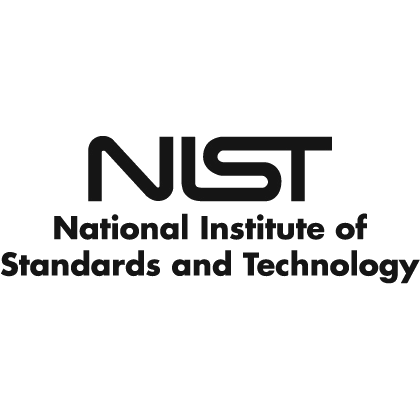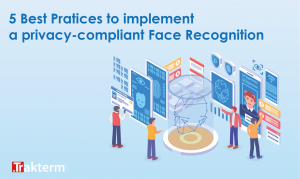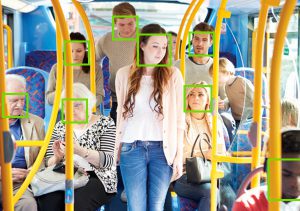
NIST Test Confirms SAFR Delivers the Highest Effective Accuracy for Live Video
For years, we’ve seen If you see something, say something posted throughout transit hubs, reminding us that during a security event, every second counts. It also reminds us that maintaining secure spaces is a joint effort. For the more than 25 million public and private security professionals around the world who work tirelessly to keep us safe, it can be next to impossible to track a potentially overwhelming number of camera feeds. No one can do it alone.
In a busy metropolitan airport, an operator monitoring dozens of video screens might not spot someone loitering in a sensitive area or spot a person of interest. All too often, security and law enforcement teams find out about persons of interest after the fact — a concerned citizen steps forward, or a call comes in from another officer. The security team must then scan every camera as fast as humanly possible to identify where the person of interest can be found.
It’s in real-world conditions like these where powerful, thoughtfully designed computer vision solutions can stand out from the competition. When time is of the essence — when real-time response matters — SAFR delivers the highest-effective accuracy for live video facial recognition.
The Live Video Challenge
It’s far easier to identify someone from a still image than people moving across a live video feed. When you renew your driver’s license at the Department of Motor Vehicles, you’re prompted to have your photo taken in what the facial recognition industry calls optimal conditions: you’re standing still, you’re facing the camera straight on, you’re in adequate lighting. But live video feeds capture people in motion — passengers catching trains, concertgoers and sports fans moving through stadiums, parents dashing through crowded retail settings during holiday sales.
The industry describes this challenge as wild images — unposed people moving about in spaces in varying conditions, unaware of a camera. And when multiple wild images move across live video feeds at once, achieving accurate facial recognition results is even more difficult.
How NIST Tests Facial Recognition Accuracy
If you’re like us, seeing is believing. The National Institute of Standards & Technology (NIST) is the industry benchmark for facial recognition accuracy. NIST plays a crucial role in providing transparency for the industry, evaluating accuracy, performance, and bias three times a year. RealNetworks advocates regularly submitting algorithms for NIST testing, because we know all too well how algorithms can change significantly over time: In just three months, from April 2019 to July 2019, SAFR from RealNetworks got 30% faster.
Accuracy on live video is the combination of speed and accuracy. When reviewing NIST results, you might think they apply to live video as well, but NIST only evaluates performance on still images, segmenting its results by image type: visa photos, mugshots, webcam, or wild images. A false non-match rate (FNMR) is the rate at which the algorithm miscategorizes two captured images from the same individual as being from different individuals. If you’re relying on the NIST FNMR for accuracy results on a particular algorithm, you’re not getting the full story.
Effective accuracy on live video means getting the best possible result while tracking a face across multiple frames to keep up with real-time video. While live video facial recognition presents the same face many times in rapid succession, with slightly different lighting and angles, to improve accuracy, competing solutions might only perform recognition on every 10th, 15th or even 30th frame. SAFR achieves over 500 recognitions per second per GPU card, and can automatically load balance this capacity across multiple video streams as needed. Being able to select the best reference image from multiple video framessubsequently compounds our accuracy.
Why SAFR Is the Best Solution for Live Video Facial Recognition
To translate NIST results into determinants of performance on live video, we must first look at SAFR’s accuracy levels relative to speed. In the crowded NIST field below, you’ll see that among the most accurate algorithms, SAFR from RealNetworks is the fastest:

January 2020 FRVT results show that among the top-tier algorithms for accuracy, SAFR from RealNetworks is the fastest. (Source: Ongoing FRVT test results, January 6, 2020)
Next, we see the impact of SAFR being able to complete multiple recognitions in the time it takes competitors to finish one. With each successive pose (frame) of the same individual, SAFR’s accuracy increases. Because SAFR from RealNetworks is faster than other algorithms, SAFR actually reaches 99.9% true positive accuracy faster than any other, including Hikvision, which boasts the highest accuracy for a single frame:

(Source: NIST Ongoing FRVT test results, January 6, 2020)
Also, SAFR has consistently had one of the lowest rates of bias in contiguous cycles of NIST tests of more than 100 algorithms. The SAFR from RealNetworks algorithm is seventh out of 167 algorithms evaluated in terms of most uniform performance across gender and skin tone. In short, if you’ve got to have the highest performance, we can say with certainty that SAFR is the best in the world at facial recognition for live video.
More Than An Algorithm: End-to-End Live Video Analytics
Going beyond the core algorithm we submit to NIST, SAFR offers an end-to-end analytics solution for live video that makes it possible to:
- Connect to any ONVIF-compatible camera
- Efficiently process video
- Lower the total cost of ownership (TCO)
- Add person detection to our list of features (with object detection coming soon)
Accuracy matters. Speed matters. Bias matters. And nowhere does the combination of the three matter more than in live video. With the highest effective accuracy for live video, SAFR is your comprehensive facial recognition solution.
– – – – –
Results shown from NIST do not constitute an endorsement of any particular system, product, service, or company by NIST.
Barcodes & Connected Supply Chain
- Barecodes & Data Capture Hardware
- Connected Supply Chain Solutions
- Voice Picking Solution
- Order Picking Solution
Smart & Safe Cities
- Automatic Vehicle Identification
- Smart Patrol
- Crowd Management
- Fever Detection Cameras
Digital Transformation
- Mobile ID
- Industrie 4.0
- Digitization Approach
- AI-Enabled Healthcare



